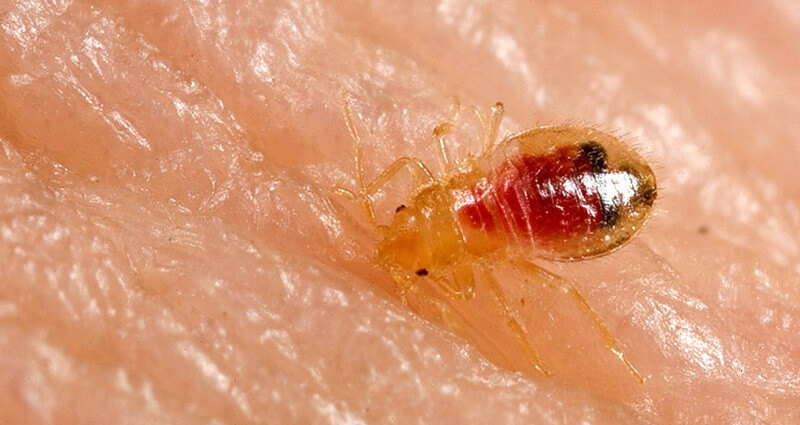Checking Out the Scientific Research Behind Bed Bug Warmth Treatments as a Lasting Bug Management Strategy
In the realm of pest administration, the pursuit for efficient and sustainable services remains a consistent pursuit. One such technique that has gained grip in recent times is making use of warm treatments to battle bed pest problems. By using the science behind thermal fatality points for these relentless insects, warm treatments provide an encouraging alternative to typical chemical-based strategies. The details of just how warm efficiently removes bed pests and the broader effects for sustainable insect management methods make this a subject worth exploring further.
Bed Pest Warmth Therapy Refine

Thermal Death Point for Bed Bugs
Subjecting bed pests to raised temperatures beyond their thermal resistance array is critical for achieving effective eradication in warm treatment procedures. The thermal death factor for bed insects refers to the temperature level at which these bugs can not survive. Research suggests that bed insects begin to die when revealed to temperatures over 113 ° F(45 ° C) for a continual period. As the temperature level boosts, so does the death price of bed pests. At around 118 ° F(48 ° C ), bed pests begin to die rapidly, with a death rate of virtually 99% within minutes of direct exposure. This shows the sensitivity of bed insects to high temperatures and highlights the performance of warm treatments in eliminating infestations. By reaching and keeping temperature levels over the thermal fatality factor for bed bugs, parasite administration specialists can guarantee comprehensive elimination of bed insect populations, including hard-to-reach areas where chemical therapies may be much less efficient. Understanding the thermal death factor for bed bugs is crucial for applying effective heat treatment strategies and achieving sustainable bug management outcomes.
Advantages of Warm Treatments
Having established the critical thermal fatality point for bed insects, it is vital to now explore the substantial advantages that heat treatments supply in efficiently eliminating these resistant insects. One of the main advantages is that warm can permeate deep into gaps and splits where bed insects hide, guaranteeing that also the most hard-to-reach locations are warmed to lethal temperature levels.
Furthermore, warmth treatments are ecologically pleasant and safe, making them a lasting insect management technique. Unlike chemical pesticides, heat treatments do not leave dangerous deposits that can position dangers to human health or the setting. This aspect is particularly important in sensitive settings such as healthcare facilities, colleges, and houses where chemical usage might not be preferable.
Additionally, heat therapies have a high success price in getting rid of bed insect infestations in a single treatment, lowering the need for numerous sees and decreasing disruption to passengers. This effectiveness not just saves money and time yet also gives comfort to those managing bed bug problems.
Effectiveness of Warmth Therapy

Research researches have constantly demonstrated the efficiency of warm treatments in achieving a high price of bed insect death. Effectively carried out heat treatments can get to all the fractures and gaps where bed bugs may be nurturing, making sure an extensive technique to extermination. Furthermore, heat treatments have actually the included advantage of eliminating bed bug eggs, which are typically immune to standard chemical therapies. Overall, the performance of warm treatments in eradicating bed insect problems makes them a lasting and trustworthy parasite monitoring strategy.
Sustainable Bug Management Advantages
Applying sustainable parasite administration practices offers long-lasting benefits for both the environment and public health and wellness. By making use of techniques such as heat treatments for bug control, we can minimize the dependence on damaging chemical pesticides that can have negative results on environments and human health and wellness - bed bug treatment. Lasting bug administration methods help in protecting biodiversity by targeting specific bugs without damaging non-target organisms, thereby keeping a well balanced ecological community
Furthermore, lasting bug monitoring practices add to the general health and wellness and wellness of bed bug heat treatment the general public. By decreasing exposure to hazardous chemicals made use of in standard parasite control methods, warm therapies give a safer choice for bug management in residential, business, and public areas. This reduction in chemical usage also assists in stopping pesticide deposits from contaminating air, dirt, and water, securing environmental high quality.
Final Thought
Finally, bed pest warm therapies have been revealed to be a reliable and sustainable insect management technique. The thermal death factor for bed insects makes them susceptible to warm treatments, which have numerous benefits over traditional chemical treatments. The effectiveness of warm therapies in eliminating bed pest invasions while minimizing ecological impact highlights the possibility of this technique as a sustainable solution for parasite control.
The bed insect warmth treatment procedure includes increasing the temperature level within ravaged areas to a level that successfully removes bed insects and their eggs. By getting to and keeping temperatures over the thermal death factor for bed pests, pest management professionals can guarantee thorough elimination of bed pest populations, including hard-to-reach areas where chemical treatments may be much less reliable. One of the primary advantages is that warmth can penetrate deep into splits and crevices where bed pests hide, guaranteeing that even the most hard-to-reach areas are heated to deadly temperatures. Unlike chemical treatments that might leave behind resistant populations, heat therapies supply a environmentally friendly and non-toxic service that can pass through deep right into furniture, walls, and various other hard-to-reach areas where bed bugs conceal.
The thermal fatality factor for bed bugs makes them vulnerable to warm treatments, which have numerous benefits over conventional chemical therapies.